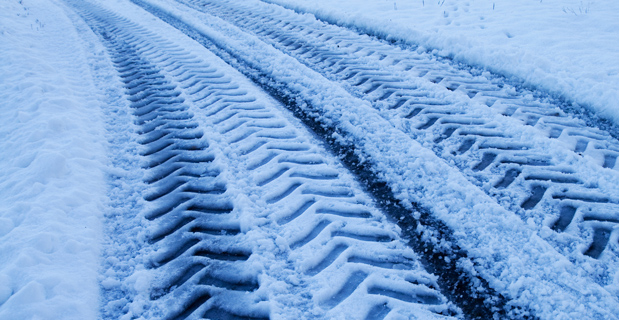WINTER TYRES, SNOW CHAINS OR SNOW SOCKS?

WINTER TYRES
The use of cold weather tyres, commonly known as winter tyres, is on the increase in the UK; particularly with the heavy snow experienced by many areas over the past few years. Many dealers were actually caught out last year, having to quickly re-stock due to the high demand. In many other European countries winter tyres are a legal requirement during the winter months so do they really make that much of a difference?
It seems they make a big difference! Winter tyres improve braking, traction and general road grip in snow, icy and wet conditions below 7°C – there’s even an improvement in cold, dry weather conditions.
Winter tyres are designed for use in temperatures below 7°C and, as UK temperatures have averaged below 7°C from mid November to the beginning of March since 1980, it might make sense to have a set ready for use come the end of each October. Winter tyres have a higher content of natural rubber and silica so they remain flexible at lower temperatures and don’t harden like summer tyres, they also have a deeper tread, designed to squeeze out snow with the movement of
the wheel. A winter tyre can be identified by a snowflake or snow topped mountain symbol on the sidewall, don’t use them all year round because they will wear out quite quickly.
Not everyone can afford to own two sets of wheels and tyres, or have the room to store the “out of season” set, a compromise is a set of all season tyres which have the higher silica content and a tread pattern somewhere between summer and winter treads. Some tyre companies and car dealerships may offer to store your “out of season” tyres.
Always inform your insurance company as some insurers consider winter tyres to be a modification.
SNOW CHAINS
Snow chains are fitted around the tyre to give friction in snowy and icy road conditions, they can be awkward to fit – particularly with cold hands and when the wheel arches have become packed with snow. It should be noted that snow chains add to the width and diameter of the tyre so always ensure there is sufficient room, there is potential risk of damage to suspension, brakes or bodywork if contact is made with snow chains and they may also interfere with electronic sensors. You should only use snow chains when the road has a layer of snow and/or ice, it is illegal to drive on cleared roads and you may also cause damage to the road and your vehicle. As most major roads are gritted or cleared you may need to remove and refit snow chains during your journey, because of this snow chains are recommended only for those living in more remote areas.
SNOW SOCKS
Snow socks are also fitted around the wheel to give friction in the same way as snow chains, no metal parts mean that noise and vibration is less than that with snow chains. Easier to fit than snow chains the snow sock is pulled over the wheel, moving the car back and forth a little to fully fit, the sock will self centre as you drive off. Socks are not as effective as chains in severe weather conditions, like chains they should not be used on cleared roads as they can cause road and tyre
damage. As with winter tyres, always inform your insurance company before using snow chains or snow socks.
